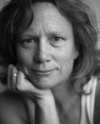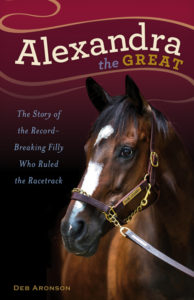“Experiment and see what happens” when art mixes with science
Illinois Alumni June 2011
For Jennifer Monson, the whole world is her classroom, from bird migration patterns that tie the corners of the world together to vast underground aquifers of burbling waters. You’ll rarely see the University of Illinois professor of dance at the front of a regular class setting – instead, her idea of a learning space involves watching birds in early morning, trekking through woods at night without flashlights, or imagining yourself a water molecule flowing through the dry streambed in which you’re now walking.
Taking a class like that with Monson “was one of my most memorable college experiences,” says Isabelle Colazzo ‘11 FAA, a dance major who graduated in May. “We practiced different ways of knowing our body in these different environments. … We had lots of time to veer off into something we wanted to explore.”
For Monson, who lived in the “wilds” of New York City as a freelance choreographer for 20 years, moving to a structured University environment in 2008 to teach dance was a dramatic transition.
But it has been worth it.
“This community is incredibly progressive; the University is full of the brightest, most creative people; and my own world has opened up in other ways … that have helped me understand my own work,” she says of her relocation to the Midwest.
Art + science = creativity
Upon her arrival on campus, Monson not only taught classes but began to create a project called “Mahomet Aquifer,” referring to the vast sand and gravel deposit underlying 15 counties in east-central Illinois and nearby Indiana which supplies more than 100,000,000 gallons per day of groundwater for public use.
Monson, who double-majored in biology and dance (“Growing up, I either wanted to be [animal researcher] Jane Goodall or [dancer] Isadora Duncan”), is as comfortable with scientists as she is with artists. For this project she worked closely with geologists, hydrogeologists, computer scientists and others. By thoroughly immersing herself in aquifer research, Monson could then translate that information into choreography that reflects the vastness of the aquifer and evokes a sense of oceans of water, percolating, molecule by molecule, beneath our feet but out of our sight.
Perhaps because of her own academic background, she draws a close connection between art (specifically dance) and scientific methods of developing and testing a hypothesis.
“Experiment and see what happens,” she says in describing both areas. “That is so much a creative process.” She challenges her students to do the same.
An agent for change
Monson has a body that is small but not slight and bright eyes that shine from a weathered face framed by longish, graying hair. As she sits and chats, she is calm, her body quiet, yet you can feel the energy of her mind. She’s modest about her teaching abilities, however, particularly since she shudders at the idea of herself as an authority figure.
“It breaks my heart to take attendance,” Monson says. “If you want to be here, you’re going to be here.”
But she does see herself very much as a collaborator, and that is one of her strengths as a teacher. “Jennifer has adopted the idea of student agency, of students taking on their own learning,” says Jan Erkert, head of the dance department.
For example, students in Monson’s “Environment and Dance Research” class are posed this challenge: Exchange ideas with a science student, then create a site-specific dance. Colazzo, who was interested in invasive plant species, met with Justin Meissen ‘10 LAS, then a UI biology major who was also president of the Red Bison Society, a University YMCA group that works to restore and re-create natural prairie environments. The biologist took the dancer on a hike through the prairie and showed her both native and invasive plants; Colazzo then explored how it felt, kinesthetically, to move in different areas – one that was overrun and another that was pristine and more open. Basing her dance on this experience, Colazzo brought the class to that outdoor spot for her performance.
“It was a taste of what a dancer would do as a professional,” she says.
Aquifer as art
The aquifer project so far has been quite … fluid. At present it has had two iterations, with Monson envisioning even more.
The first one involved a collaboration between students in the UI Department of Dance and experts at the Advanced Visualization Laboratory at the National Center for Supercomputing Applications on campus. “You can tell people, ‘Here are the numbers,’ but another way of communicating that is [via] .. emotion, the experience through the body,” said AVL Director Donna Cox about the dance project. “There is always a challenge of rendering images in motion and projecting them in space that is unusual.”
“It brought surprises, and that was fun.”
The outcome, performed in 2008 by sophomore dance majors, included images – projected on the walls and onto the dancers themselves – of grains of sand (moving as they would in an aquifer), a 3-D model of the space the aquifer occupies, maps and diagrams of the aquifer’s composition.
In another version, Monson collaborated with Steve May ‘08 FAA, a dance graduate student, and three Illinois dance alumni: Kyli Kleven ‘09 FAA, Amy Swanson ‘08 FAA and Stephen West ‘08. Their creative method included typical Monson-type activities. While camping in the Shawnee National Forest in southern Illinois, the dancers and their teacher floated in a stream, walked a dry creek bed and engaged in voice work and the physical and spiritual aspects derived from Qigong. The piece was eventually performed outdoors in 2009 – at nearby farmers’ markets, a local farm and a grain elevator – in order “to engage people, especially farmers, who rely so much on the aquifer,” says Monson.
Much of Monson’s work, both in town and in New York City, is site-specific – as are her contacts. Because she continues to work in New York City as well as on campus, Monson is able to serve not only as a teacher but as a mentor and conduit for students looking to join the professional dance community there. Both communities are richer for it.



0 Comments